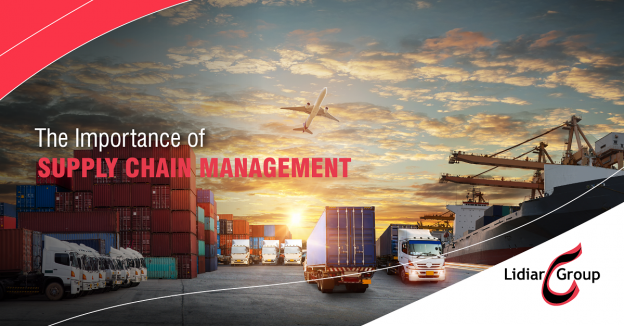
The Importance of Effective Supply Chain Management
Lidiar Group’s Contracts and Procurement team have been supporting our clients during some of the globe’s most challenging times as their profession has been caught in a perfect storm of supply challenges, rising costs, transportation uncertainty and an uncertain economic environment impacted by conflict, COVID recovery and inflationary pressures.
In our latest blog, the team looks at their approach to supply chain management for success in major project delivery.
Regarding managing a supply chain, we take a simple five-stage approach:
- Scoping, Specification and Briefing
- Market sounding
- Market engagement
- Agreement and Commencement
- Engagement during construction and delivery
Scoping, Specification and Briefing
At this stage, we are getting under the skin of a project, understanding its goals, objectives, schedules, timelines, material requirements and resourcing.
Market sounding
Here we start a discussion with the marketplace, identifying potential supply sources for the project based on the criteria in the briefing and additional considerations such as local content and procurement targets, sustainability goals, indigenous participation rates etc.
Market engagement
Following soundings, this stage is about formalising the procurement plan, requesting details costs and delivery schedules and finalising each element for presentation and agreement by the client.
Agreement and Commencement
Contracts and agreements are taken care of at this stage as we bring our market knowledge, sounding, budgets and commercial acumen and expertise to bear on the project so that everything is ready for commencement and all parties have a clear understanding of objectives, obligations and requirements.
Engagement during construction and delivery
A solid procurement strategy ends at this stage; the ones we put together at Lidiar Group don’t. We work with you through the entirety of a project ensuring contractual obligations are met, and any challenges with supply can be easily and quickly addressed by our team of professionals.
Taking this approach will set any project up for procurement success. As professionals, we know the tricks of the industry based on years of insights and project success, but if you are planning a procurement strategy, how can you gain an advantage? Don’t despair; we’ve put together the questions we get asked most frequently – and the ones you need to consider when developing a procurement strategy – as well as some helpful pointers that outline Lidiar Group’s approach to contracts and procurement.
Frequently Asked Questions
- What strategies do you employ to effectively engage and collaborate with suppliers?
- Establish relationships with suppliers before needing the product or service. Always reach out to the suppliers/market to develop rapport and relationships before needing something.
- How do you ensure transparency and accountability in your supply chain management process?
- Communicate, communicate and communicate. Use established processes such as project charters and project plans. Set clear Key Performance Indicators, ensure everyone understands the terms of contracts and agreements and that all parties comply with expectations.
- How do you assess and mitigate risks associated with the supply chain, such as disruptions or quality issues?
- Keep up to date with the developments in the market.
- Map the entire end-to-end supply chain, including supplier’s suppliers.
- Conduct a thorough supplier evaluation by assessing the supplier’s financial stability, reputation, production capacity, and quality management processes.
- How do you evaluate the performance and reliability of suppliers to ensure consistent delivery of goods and services?
- Reach out to contacts in the market, collect testimonials, references, third-party accreditations.
- Monitoring of performance regularly by carrying out regular audits and site visits
- Carrying out risk assessments
- What measures do you take to promote ethical sourcing and sustainability within the supply chain?
- Packaging materials, sourcing of transport providers, aggregating of products to minimise truck/ship and plane movements.
- Fostering stronger and more collaborative supplier relationships
- Encourage attainment of relevant certification
- How do you foster long-term relationships with suppliers and encourage their continuous improvement?
- Set clear expectations.
- Work with them at a humanistic level.
- Get to know them and their world and their struggles.
- Carrying out supplier collaborative workshops
- Ensure supplier values align with company values
- What technology or tools do you use to enhance supply chain visibility and traceability?
- Implementation of an Enterprise Resource Planning system
- The effective use of AI, data and analytics
- Automation for manual transactions and processes
- How do you handle emergencies or unexpected events that can impact the supply chain, such as natural disasters or supplier bankruptcies?
- Select the most successful supplier and always ensure there is a backup plan.
- Building resilience in the supply chain
